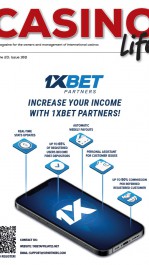
Reassurance in an Uncertain World By Raymond Chan
Stablecoins are a type of cryptocurrency designed to maintain a stable value by pegging them to a reserve of assets, often a fiat currency like the U.S. dollar. Unlike traditional cryptocurrencies like bitcoins, which can experience significant volatility, stablecoins aim to provide the stability of fiat currencies while leveraging the benefits of blockchain technology.
There are mainly three types of stablecoins in the market.
Fiat-Collateralized Stablecoins: These are backed 1:1 by a fiat currency stored in a bank account. Examples include Tether (USDT) and USD Coin (USDC). USDT is the largest stablecoin by market capitalization, often cited as the first successful stablecoin. Managed by Circle, USDC is gaining traction in both retail and institutional markets, also pegged to the U.S. dollar.
Crypto-Collateralized Stablecoins: These are backed by other cryptocurrencies, often over-collateralized to absorb volatility. Dai (DAI) is a notable example and uses smart contracts to maintain its value against the U.S. dollar.
Algorithmic Stablecoins: These maintain their value through algorithms that control supply and demand but do not have collateral backing. However, this type of stablecoin is relatively small in term of market share when compared to USDT, USDC, as well as DAI. Recent legislation passed by the United States Congress aims to regulate stablecoins, paving the way for banks to issue and manage digital assets. This legislative move indicates a growing need of recognition for stablecoins in the financial ecosystem.
Regulatory Landscape
The recent legislation in U.S. focuses on regulating stablecoins, which is crucial for ensuring consumer protection and financial stability. The bill suggests that a significant amount of Treasury bills (T-bills) will be required to back stablecoins, potentially leading to a shift in planned issuance toward more T-bills and fewer longer-term securities. In theory, it will provide the capital market with additional liquidity but it can also means less stability.
As stablecoins gain regulatory clarity, we can expect greater integration into traditional financial systems. Banks may begin offering services that incorporate stablecoins, enhancing their utility for everyday transactions and cross-border payments. With a growing need for collateral to back stablecoins, there is already a shift toward more short-term securities, influencing overall market dynamics and liquidity. This could provide more alternative resources for need of investment in innovative projects or companies in a formal way.
Volatility Mitigation and the Emerging Market
Although stablecoins are designed to minimize volatility, they are not immune to market fluctuations or regulatory challenges. The future will likely see increased scrutiny regarding their backing reserves and operational transparency, which could shape their stability and acceptance.
Also stablecoins hold potential for enhancing financial inclusion in emerging markets, where access to traditional banking is limited. They can provide a reliable means of transferring value and conducting transactions in economies with unstable currencies.
However, any unpredictable new regulatory frameworks and market dynamics will be essential to the growing direction and potential impact to the market. Still, stablecoins could play a transformative role in the global financial ecosystem.
Conclusion
Stablecoins are poised to play a critical role in the evolving financial landscape, offering a bridge between the stability of fiat currencies and the innovative potential of blockchain technology. Even the path forward will not be without challenges. Stablecoins are holding a solid potential to transform the global financial ecosystem. As this innovative sector develops, it will be crucial to monitor its progress regarding implications for the broader economy. This is especially true if this new type of funds can provide alternative resources for capital-hungry innovative projects or startup companies in a creative way.
About Raymond Chan
 Raymond is a software engineer by profession with a track record in corporate innovation and entrepreneurship. He co-founded two prosperous startups, TGG Interactive and Global Gaming Group in USA and Asia respectively, where he served as director and CEO to lead the electronic gaming businesses from 2007 to 2018. Earlier in his career, Raymond was a founding member of the business intelligence team at ETRADE from Morgan Stanley and played a pivotal role in designing the TiVo customer intelligence system in Silicon Valley
Raymond is a software engineer by profession with a track record in corporate innovation and entrepreneurship. He co-founded two prosperous startups, TGG Interactive and Global Gaming Group in USA and Asia respectively, where he served as director and CEO to lead the electronic gaming businesses from 2007 to 2018. Earlier in his career, Raymond was a founding member of the business intelligence team at ETRADE from Morgan Stanley and played a pivotal role in designing the TiVo customer intelligence system in Silicon Valley
*** This article was originally published in Casino Life Magazine Issue 179 July 2025 ***



















